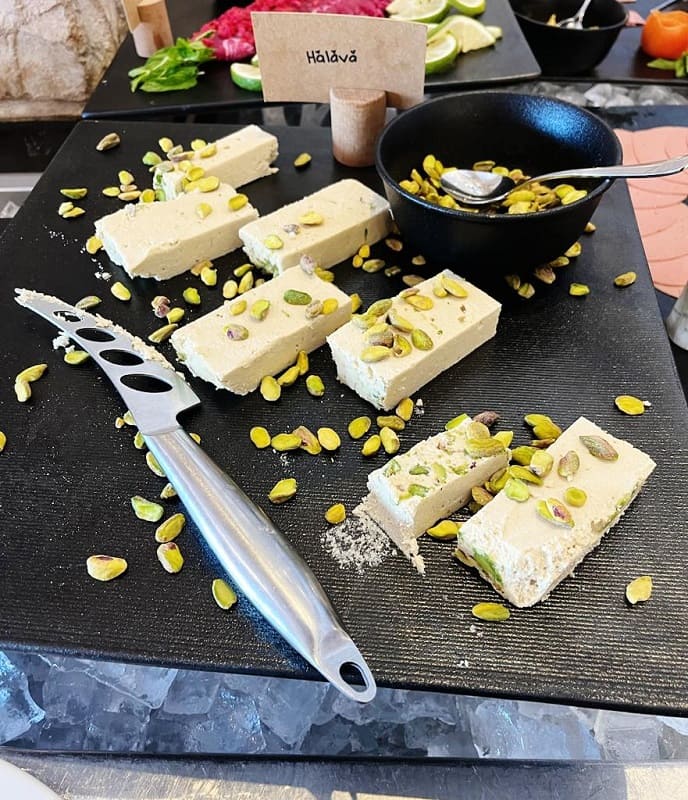Carbohydrates are often praised for their ability to provide energy, but they can also be the culprit behind that post-meal drowsiness. Whether it's a hearty serving of rajma chawal, a stack of parathas, or a bowl of pasta, consuming a carb-heavy meal can leave you feeling sluggish and prone to nodding off. This phenomenon is not just a human experience; it's a natural response shared by many animals.
The Brain-Gut Connection
The connection between our gut and brain is a remarkable one, with the digestive system playing a crucial role in regulating our energy levels and sleep patterns. When we consume carbohydrates, our bodies break them down into glucose, which is then used as fuel for our cells. However, this process also triggers the release of specific hormones and neurotransmitters that can influence our sleep-wake cycle.
The Tryptophan-Serotonin-Melatonin Pathway
One of the key players in the carb-induced drowsiness equation is the amino acid tryptophan. Carbohydrates, particularly those found in grains, legumes, and pasta, can increase the availability of tryptophan in the bloodstream. Tryptophan is then transported to the brain, where it is converted into the neurotransmitter serotonin. Serotonin is often referred to as the "happiness hormone" due to its role in regulating mood, but it also plays a crucial part in the sleep-wake cycle. When serotonin levels are elevated, it can promote feelings of relaxation and calm, paving the way for drowsiness. Furthermore, serotonin is also a precursor to melatonin, the hormone responsible for regulating our circadian rhythms and promoting sleep. As serotonin levels rise, melatonin production increases, setting the stage for a good night's rest.
The Role of Insulin and Blood Sugar
Another factor contributing to the sleepy sensation after a carb-heavy meal is the release of insulin. When we consume carbohydrates, our bodies produce insulin to regulate blood sugar levels. Insulin not only facilitates the uptake of glucose by cells but also promotes the entry of tryptophan into the brain, further amplifying the tryptophan-serotonin-melatonin pathway.
Additionally, the rapid rise and subsequent drop in blood sugar levels after consuming carbohydrates can trigger fatigue and drowsiness, as our bodies work to restore the balance of glucose in the bloodstream.
Animal Behavior and Carb-Induced Lethargy
The phenomenon of carb loading and subsequent drowsiness is not unique to humans. Many animals exhibit similar behaviors after consuming carbohydrate-rich meals. For instance, cats and dogs often experience post-meal lethargy, which is attributed to the same physiological processes involving tryptophan, serotonin, and melatonin. Even in the wild, animals have been observed experiencing periods of inactivity and rest after consuming carbohydrate-rich foods, such as berries or grains. This natural response likely serves as a survival mechanism, allowing animals to conserve energy and rest while digesting their meal.
Practical Implications and Tips
Understanding the science behind carb-induced drowsiness can help us make informed decisions about our dietary choices and meal timing. Here are a few practical tips:
- Balanced meals: While carbohydrates are an essential part of a healthy diet, it's important to balance them with proteins and healthy fats. This can help mitigate the drowsiness-inducing effects of carbs by slowing down the absorption of glucose and the release of insulin.
- Meal timing: If you have important tasks or meetings scheduled, it may be wise to avoid consuming carb-heavy meals beforehand. Instead, opt for lighter, protein-rich snacks or meals to maintain focus and energy levels.
- Exercise: Regular physical activity can help regulate blood sugar levels and improve insulin sensitivity, potentially reducing the impact of carb-induced drowsiness.
- Hydration: Staying well-hydrated can also aid in digestion and energy levels, helping to counteract the sleepy effects of carb loading.
While carb-induced drowsiness is a natural physiological response, being mindful of our dietary choices and meal timing can help us strike a balance between satisfying our nutritional needs and maintaining optimal energy levels throughout the day.


